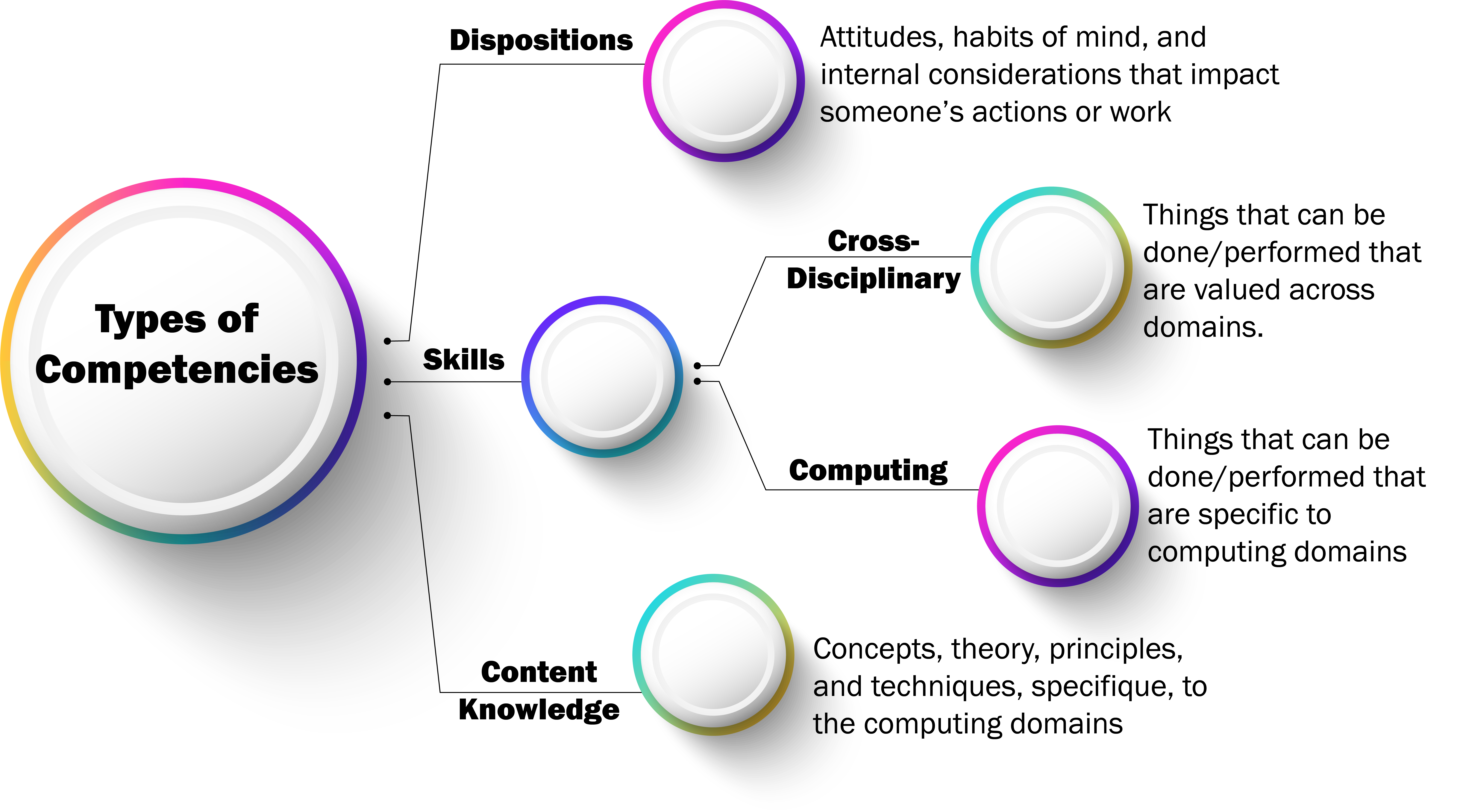Competency-based teaching and learning embody rich learning environments that enable meaningful learning processes, including meaningful contexts, an integrative and holistic approach that combines multiple views and disciplines, constructive learning through the interaction with environment, collaborative learning with peers, opportunities for guided discover and ongoing reflection.
The alignment between curriculum, pedagogy, and assessment in competency-based teaching and learning environments is paramount. Each component must be designed to support the others. For example, if a competency involves critical thinking and problem solving, the curriculum should include content that fosters critical analysis and engagement with ill-structured problems that may require more than disciplinary competence to solve.

A competency is expertise individuals can demonstrate in professional, educational, social, or other life contexts. Competencies include content knowledge, skills, and dispositions.
Dispositions are personal qualities such as values, beliefs, and attitudes that impact an individual’s actions. A person may have the appropriate skills and knowledge to perform a task, and yet may not be able to perform satisfactorily due to the lack of suitable dispositions. Dispositions help a person identify why and when things need to be done and motivate them to follow through in action using knowledge and skills.
Skills are the abilities of a person that can be demonstrated by doing or performing in a relevant context.
Cross-disciplinary skills are the skills that individuals can use in a variety of professional situations, ex., communication, collaboration, problem-solving, etc. Cross-disciplinary skills are domain-agnostic
Computing Content Knowledge refers to concepts, theory, principles, and techniques specific to a computing domain. The DEAP project has not focused on computing knowledge at this time. Visit ACM Curricula Recommendations for specific descriptions.
A competency-based curriculum is built upon competencies related to program outcomes and individual learner goals.
Competency mapping is an important part of developing a competency-based curriculum. The first step is to set program outcomes, which can be mapped to program-level competencies. These could be taken directly from or adapted from the competency model proposed by DEAP.
